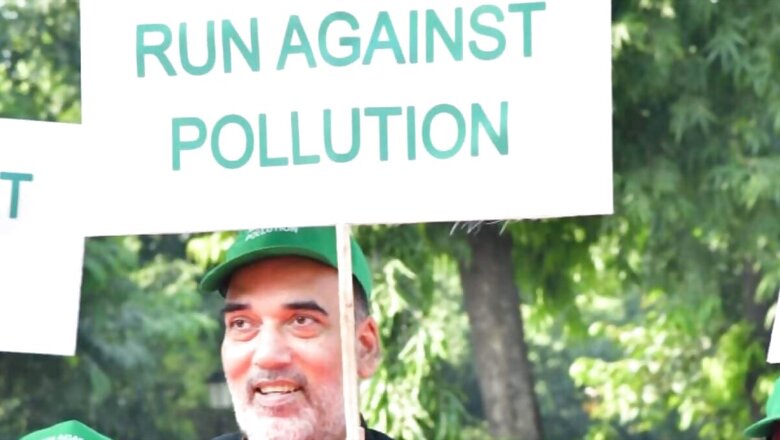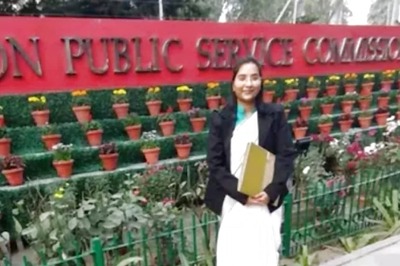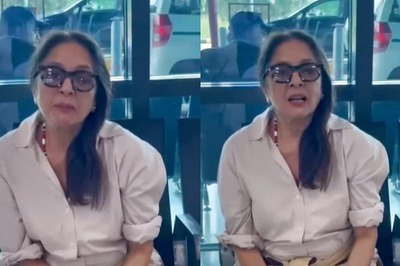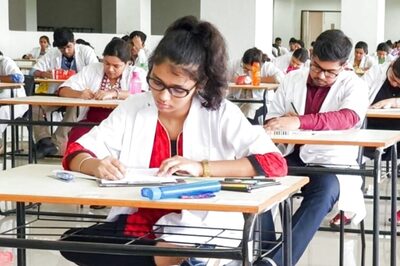This Winter, Delhi’s Air Will Be Much Cleaner than Last Year; Delhiites Must Do their Bit: Gopal Rai

views
From hotspots to water sprinkling and stubble burning, as winter deepens in Delhi-National Capital Region (NCR) bringing down its air quality, Delhi’s environment minister Gopal Rai lists the steps being taken to tackle the air pollution.
Edited excerpts:
You had a meeting with 28 departments. What decisions were taken ?
Just as the forecast said, as the winter is deepening, there is a drop in the wind speed and due that the air quality index (AQI) has been steadily rising. When the AQI level shoots beyond 300, according to the directions of Commission for Air Quality Management (CAQM), Graded Response Action Plan (GRAP) 2 has been implemented. Even within Delhi, this has been implemented.
To ensure the implementation of the steps envisaged under GRAP 2 is done in a robust manner, we held a meeting. We took a lot of important decisions.
The first is regarding the hotspots in Delhi — all those in-charge of these hotspots, that is divisional commissioners, have been given directions that on October 25, they are to visit the ground and plug any loopholes.
Secondly, apart from the 13 hotspots in Delhi, AQI monitoring has shown that there are eight places where the level of pollution is rising sharply. Special teams have been formed for these locations and they will find the sources of pollution and try and remedy that.
Thirdly, the water sprinkling that is happening across Delhi is ‘normal’ water sprinkling. Now, dust separation powder will be added to the water so that the dust can be forced to remain down for longer periods.
Decision has also been taken to increase the frequency of metros and frequency of buses. Paryavaran Sewa buses will be run. Metros have been told to increase the frequency. Those that have intervals of seven-eight minutes have been told to reduce it to five and those that have an interval of five minutes, have been asked to reduce it to two-three minutes. This will enable more people use public transport. Along with this, SDMs have been directed to call RWA meetings in their areas and provide heaters to guards. These are some of the important decisions that have been taken.
AQI 300 पार होने पर CAQM के GRAP II लागू करने का फ़ैसला लियाWinter Action Plan में 13 Hotspot चिन्हित की थे। 8 नई जगहों पर Focused तरीके से प्रदूषण के स्त्रोत चिन्हित करने के लिए और काम करने के लिए Nodal MCD DCs को निर्देश दिए।
— @AapKaGopalRai pic.twitter.com/6VlfB86oec
— AAP (@AamAadmiParty) October 23, 2023
You have also said that secretaries were not available in the meeting today. What is your concern?
The meeting that was called today after the AQI crossed 300 and considering that the next one month is very challenging. Big decisions cannot be taken in the presence of junior officers only. The absence of any secretary in today’s meeting shows that they are not serious regarding pollution. It is tough to take decisions in the presence of junior officers only. I hope that they will be present in the next meeting. And, for the next one month, they will work in a focused manner.
Dussehra will be celebrated on Tuesday. There is an apprehension that a lot of crackers will be burst. What are you doing to control this?
In Delhi, there is a ban on crackers. The decision has been communicated to Delhi Police. They would be making their own strategy. I hope that compared to last year, there will be a fall in such incidents. I want to tell the people of Delhi that as long as everyone does not participate constructively, as long as people don’t contribute individually to combat pollution, everyone will pay a price. Compared to last year, this year’s result will be better.
सर्दियों में 20-25 दिन Air Quality खराब हो जाती हैउसी के मद्देनजर आज सभी विभागों के साथ Meeting रखी गई थी
लेकिन विभागों के Secretary नहीं आये और कई विभागों के जूनियर अधिकारी आये थे
जिन्हें कुछ भी जानकारी नहीं थी।
Chief Secretary से अनुरोध है कि वो विभागों के सेक्रेटरी को 1… pic.twitter.com/6VSHDCmvwL
— AAP (@AamAadmiParty) October 23, 2023
You said that apart from the 13 hotspots, there are eight other locations where the pollution is rising quickly. Looking ahead, do you think that Delhi will have more than 13 hotspots?
I don’t think that will happen. However, there are some local factors, which is why we have formed these teams to find the reasons behind it. It is possible that construction activity must be going on or there could be congestion. If the same situation persists for the entire year, only then will we come to that conclusion. I feel that if work is done on local factors, the situation will improve.
Smog tower was inaugurated with lot of fanfare. However, today when there is a need for it, it is not working…
The report on the two-year study has been completed. Once we take a look at that, a decision will be taken.
What about pollution in neighbouring states, such as stubble burning in in Punjab and Haryana. You already had a meeting on this…
We had asked the central government for a joint meeting. That meeting has just happened. In that meeting, we have placed the concerns of Delhi. All have assured that stubble burning in Punjab and Haryana will be less this year compared to last year. Diesel buses will not be allowed to enter Delhi. Brick kilns in areas neighbouring the Delhi-NCR will be asked to cease manufacturing. Therefore, we are hoping that this year, we will get more cooperation from neighbouring states compared to last year.
Will there be any decrease in stubble burning in Punjab? By when do you estimate pollution in Delhi to rise due to stubble burning?
Normal trends and experts are also of the opinion that stubble burning rises exponentially around the 30th. As far as Punjab is concerned, the government is trying to reduce stubble burning this year compared to last year.



















Comments
0 comment